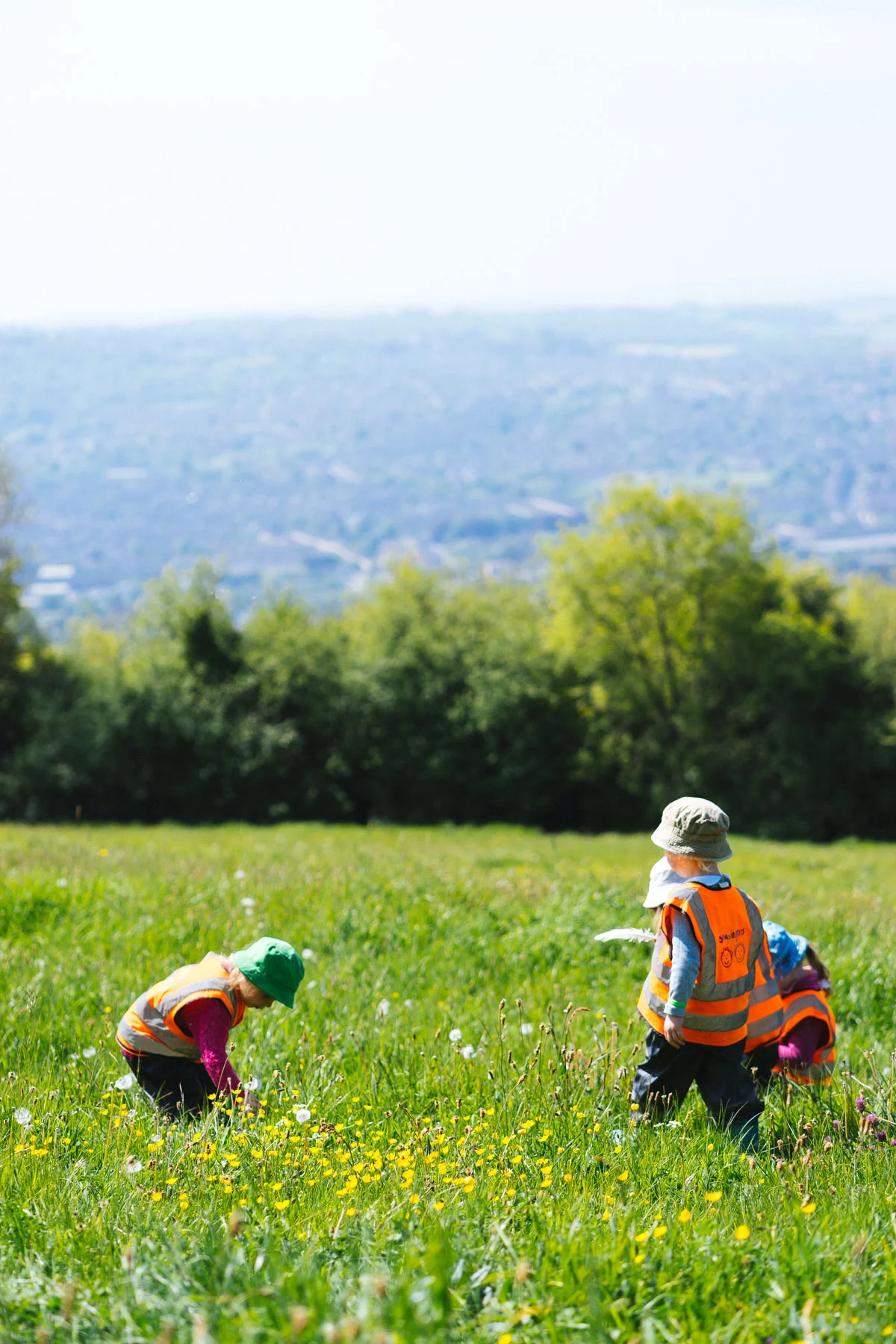
Ten Stick
On a training course in Cornwall this Summer I had the great opportunity to have a masterclass in outdoor Maths by Juliet Robertson (her Messy Maths book is out now); ideas, tips, games and activities filled the 45 minute session and left me with a long list of things to introduce into my practice.
The first thing I did when I got back home was to take one of my hazel walking sticks (yes I have several) , saw the top off to make it a metre long and then cut notches every ten centimetres. This transformed a once ordinary pole into THE TEN STICK!!
What does it do you ask?
It measures the length of flowers, grasses, trees and other sticks when we need things to be a certain length. It tells us the depth of a puddle so we know if it will come over our wellies. When we put things next to the notches it tells us how many things we have collected and spaces them out so it's easier to count them. It can even tell us the circumference of a tree if we wrap some string around it first and then lay it flat. The first time the ten stick came on a walk it even worked as a (wait for it) WALKING STICK to show who the leader was of the group!
The ten stick provides a simple way to measure amounts for young children and helps them to understand amounts in a visual and tactile way. It now accompanies me out of most forest school sessions and it always gets used.
Not bad for a bit of hazel...
P.S The next time you're in a woods try this simple way of measuring how tall a tree is!
When nothing is more than enough
Before heading out on any Forest School trip I look around my workshop and think "what will I need?" I have planned activities which require certain items but I also have my continuous provision which can be brought out to facilitate a range of interests shown by the children.
There's normally string, cord, scissors, knives, collecting pots, binoculars, magnifying glasses, cloth, paper and crayons ready for when a child shows an interest so that I can help them develop their ideas and engage with their interests.
Just before a walk through Primrose Hill Community Woodland recently with preschool children from Grosvenor I was looking around but instead of packing my usual pieces I thought "Let's see what happens when I take nothing", no extra items, no forest school backpack, no extra weight apart from the grab bag that accompanies us on every trip.
What happened instead was one of the most enjoyable trips possible. Rather than thinking constantly about how to extend each child's interest using extra items we focussed purely on what was around - sticks to make bug and fairy homes or to make arrows that directed us around the woods, charcoal from recent fires for drawing on trees. Dandelion clocks whose seeds are perfectly designed to float away on the lightest breath of wind were spread far and wide by the group who also investigated the wide range of meadow flowers on the hill; buttercups, plantain, lady's smock, herb robert and daisies to name just a few. Moreover there was the geography of the walk, climbing upwards, upwards and upwards right to the summit was a challenge the the group were more than up for, one girl even carried up three large rocks that she had found in the woods.
Eventually we reached the top and the view out across the surrounding landscape couldn't have been more rewarding. It was a session where I took nothing but everything came together perfectly.
In Search of Spring
The seasons are steadily turning beyond our doorsteps and it’s the perfect time to go on the lookout for the emerging buds, leaves and blossoms that show us that nature is ready to wake up.
On a short wander-look with a preschool group from Grosvenor there were plenty of things to look at and discover when we took the time to look around. At the end of our walk, the group threaded their collections into mobiles that we hung in the trees to welcome the Spring in. After such a busy walk we sat amongst the Ash, Willow, Sycamore and Elder to try a cup of Birch twig tea freshly cut from a tree we passed by.
Making Birch twig tea using fresh cuttings
Collecting
Have a look out for some of these signs of Spring when you’re out and about!
Blossom
The earliest flowers that appear on the trees belong to the Prunus family of plants. This group includes Almonds, Apricots, Damsons and Blackthorn but the most well known are Plum and Cherry. The flowers will grow in different groupings depending on the variety but they all have five petals and are white or pink.
Flowers
Searching for #Spring with @snapgrosvenor. Collecting dock, goosegrass, ramsons and prunus blossom & making birch twig tea 🌲 #forestschool pic.twitter.com/eY0RtiNxxI
— Snapdragons Forest (@snap_forest) 3 March 2017
Crocuses peeking through, you can almost track the coming season depending on where the flowers are open – farther up the hill where it is warmer they were already open but this crop were still waiting for a bit more sun and a rise in the temperature.
Down the pathway there was another yellow flower that is an indicator of Spring: Celandine. At first glance this may look like a buttercup (it’s part of the same family) but it continues opening to a bright 8-9 petalled flower head and with its distinctive heart-shaped leaf it is a welcome sight to many walkers
Leaves
Around on the ground are young cleavers are shooting up with their stems covered in hooks and leaves encircling in sets of 5-7. Other old names include cleavers, goosegrass, catchweed, stickyweed, robin-run-the-hedge, sticky willy, stickyjack, and grip grass. Once children found out the sticky properties of these plants, they were off with mischief in their eyes!
Playing with Cleavers
The Dock leaves are coming on strongly with red tinged stems poking up from the ground. Some of the children knew that they could use them to help cure nettle stings, this led to a discussion as to whether they were “Dock” leaves or “Doctor” leaves!
Ramsons (my personal favourite Spring leaf) are coming up in woodland areas as well, although you may know them better as wild garlic. Their distinctive smell fills the air around this time and can also fill your dinners too! This will certainly be playing a part in our upcoming Forest School sessions.
As always – take care when you’re out looking for wild plants and always be sure of what you’re touching before you pick (or eat) what’s growing in the fields, hedgerows and woodlands. If you're not sure about what you’ve found, take a picture and have it sent to me next time you’re at your nursery, or Tweet it to me at @snap_forest.
Tim














